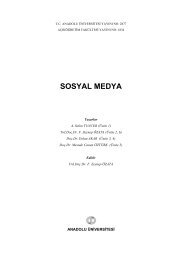THE REPUTATION COUNCIL
Ipsos%20Reputation%20Council%202015%20Report
Ipsos%20Reputation%20Council%202015%20Report
You also want an ePaper? Increase the reach of your titles
YUMPU automatically turns print PDFs into web optimized ePapers that Google loves.
30 31<br />
However, with further probing, a strong sense of differentiation between<br />
brand and reputation emerges. This is based on the concept that the<br />
corporate brand is in effect an articulation of what a company stands<br />
for - a promise to stakeholders about the way the company will behave.<br />
Reputation, on the other hand, is formed when an individual compares this<br />
promise with their experience of a company’s behaviour:<br />
I would say corporate reputation is the second order condition that<br />
is… what their perception and belief about the organisation actually is.<br />
“Expectation versus experience.”<br />
This concept would seem to be at the heart of the communications<br />
management process and is a key consideration that needs to run<br />
through most communication strategies.<br />
This is because a promise by definition creates expectations, and expectations<br />
become the benchmark against which a company is judged. It’s therefore<br />
important that a company’s communications activities (PR programmes,<br />
advertising, internal communications etc) do not articulate and promote<br />
a corporate brand promise that is not aligned with its ability to deliver. A<br />
good communications strategy will therefore in part be built on a clear<br />
understanding of the expectations being placed on an organisation (and<br />
in many cases the industry in which it operates) in order to have a clear<br />
understanding of what it needs to deliver:<br />
“Operationally we have got to be able to<br />
deliver to what the brand stands for and I think<br />
that is what builds our reputation.”<br />
It’s therefore equally important that where promises are explicitly made<br />
that there is a high degree of alignment with employee behaviour.<br />
The phrase ‘living the brand’ is much over used but at its core lies<br />
an essential truth; an organisation’s ability to deliver on the promises<br />
it makes is predominantly determined by the performance of the<br />
individuals who work within it. Virtually all council members recognise<br />
this fact and try to guide employee behaviour by talking about their<br />
core values; the characteristics and behaviours they believe employees<br />
need to understand and practice:<br />
We rely on our ‘employee code of conduct’ to guide and align<br />
our collective behaviour when we make business decisions, as it<br />
outlines our values and supports our commitment to ethical and<br />
honest conduct.<br />
The brand is perhaps one of your biggest tools in your reputation<br />
but so are the behaviour and the actions of your management.<br />
They are all demonstrative elements of your reputation. So for<br />
me reputation is the output – the brand is one of the inputs as are<br />
employees.<br />
The danger from a reputation perspective is where employees are<br />
not aligned to core values and the corporate brand promise becomes<br />
out of kilter with reality. For example, creating a corporate advertising<br />
campaign around customer service when employees have received<br />
little appropriate training or promoting supply chain transparency when<br />
your senior managers are using companies outside your approved<br />
supplier list.<br />
As one member put it:<br />
Brand is what you would like to be, reputation is what is.<br />
The challenge for communicators is therefore to help ensure<br />
that both roads lead to the same destination.



